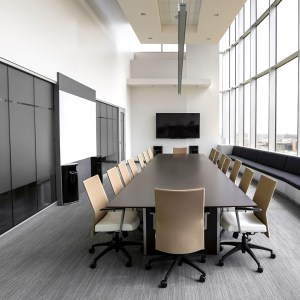Share This
Related Posts
Tags
Reimagining Canadian Office Space
By Erica Rascón on Mar 5, 2021 in News
How is the commercial real estate landscape changing and how do we adapt? How will we apply those learnings to our future as a technology innovator? These questions have been on the mind of the team at Yardi Canada as well as on technology providers worldwide.
Commercial asset managers require flexible workspaces and integrated technology to adapt and thrive. Those foundations pave the way for greater efficiency, resilience and human-centric design.
To further explore trending implementations of destination workspaces and integrated technology, a recent “Future of the Work Place” webinar hosted by The Empire Club of Canada provided valuable insights.
More equitable, accommodating and accessible workplaces
It begins with considering occupant safety. Yardi Canada is an occupier of offices in Toronto, Vancouver and Saskatchewan with 400 employees across the country. In addition to following provincial COVID guidelines, we are considering the very nature of the employee-workplace relationship and how that relationship may change to promote more equitable occupant wellbeing.
During the webinar, Infrastructure Ontario president Toni Rossi explains, “Can tenants make it safely to work? Once there, can they work in healthy conditions? It is not just about feeling safe in a space, because that’s personal. It’s about leaving their homes and getting to work safely, and working safely, because more people (these days) have the responsibility to care for the elderly and for young children.”
For managers of all asset classes, the pursuit of equitable workspaces encourages the creation of healthier environments for all occupants, including service workers and vendors who may not have remote work options. Previously overlooked spaces, such as control rooms, could be reconfigured to accommodate worker wellbeing. With such considerations in place, large office spaces can maintain their appeal and with the right technology, they can be managed remotely.
Revisiting open floor plans and measures of productivity
While the pandemic has challenged the popularity of open floor plans in residential real estate, commercial landlords are experiencing greater demand on this front. Yardi Canada agrees with the panelists concluding that open concept workspaces will continue to demonstrate value for commercial tenants.
Before the pandemic, tenants who opted for open floorplans were looking to drive work environments that encourage teamwork, learning and creativity while supporting social activities. These spaces continue to serve the same purposes while offering the added benefit of social distancing without feeling isolated, open concepts permit a functional and healthy use of space.
The open space also encourages inclusion and wellbeing in the workplace. Tenants can provide greater consideration to their employee’s work preferences, integrate biophilic design principles throughout the office and take advantage of amenities such as wellness rooms.
Panelists acknowledge that many workplaces will uphold a hybrid model of in-office and remote work options. Sarah McKenzie, independent consultant – Innovation and Future of Work observes that the “office will likely shift from a central destination for all employees to a more fluid ‘hub’. Its use will fluctuate based on the needs of occupants.”
At Yardi, we are engaging with employees regarding remote work and flexible, in-office options. Multiple factors will influence our decisions, from productivity to company culture and employee wellness. Such engagement, however, paves the way for workplaces that are both client-focused and employee wellness-centred.
Asset managers would benefit from innovative tools to manage such flexible workspaces, offering access to tenants as a value-added service.
Foundational tools for the future
Asset managers must have access to reliable data to efficiently address the unique and changing needs of tenants. There are a lot of innovative products being developed in the industry today. The first step is to implement technology to streamline and automate processes which will promote greater efficiencies, increase insights and enhance decision making. With this as a base, leadership can take the next steps to create the vision of that future workspace.
Technology that seamlessly combines portfolio health, tenant risk, deal management, budgeting and construction in a single connected system proves to be a foundational element for efficiency. Such systems and software providers should centralize all your data into one dashboard, allowing you to easily track assets throughout the entire tenant lifecycle, while continuously collecting data related to occupancy, lease terms and other operations. Effective software should also be aided by machine learning, so asset managers can receive recommendations customized for a company’s operations and competitive environment.
Asset managers equipped with integrated technology that manages the entire real estate lifecycle are best positioned to then focus on reimagining, strategizing and redesigning their workspace to endure challenging times and thrive again.
Read more about the first steps towards elevating your asset management.
